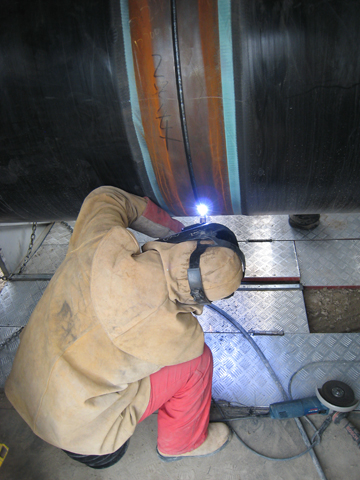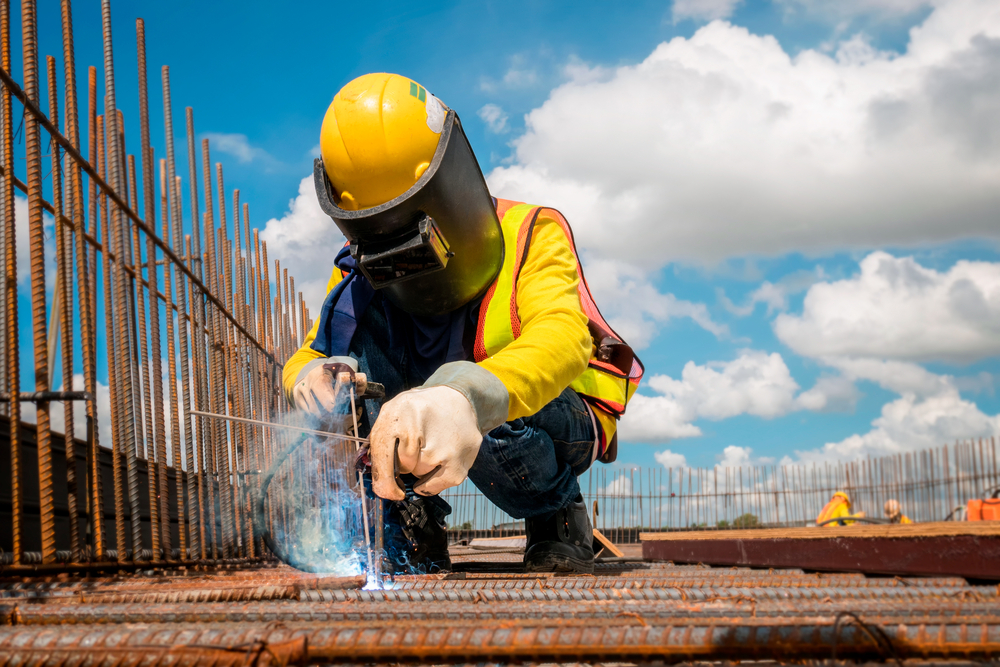Everything about Welding: Secret Insights Into Techniques and Finest Practices for Success
Welding includes a variety of techniques, each matched for details products and applications. Recognizing these approaches, such as GMAW, SMAW, and TIG, is essential for accomplishing suitable results. In addition, the appropriate devices and security practices can not be overlooked. As preparation and repairing play essential duties in the welding process, mastering these elements can significantly improve the quality of the end product. What are the key variables that ensure a successful weld?
Understanding Different Welding Methods
Welding strategies include a selection of techniques, each matched to certain applications and products. Among one of the most common methods are Gas Steel Arc Welding (GMAW), Protected Steel Arc Welding (SMAW), and Tungsten Inert Gas Welding (TIG) GMAW, additionally called MIG welding, is preferred for its speed and versatility, making it perfect for slim products. SMAW, or stick welding, is preferred for its simpleness and effectiveness in outside environments, especially with thicker steels. TIG welding provides accuracy and control, making it ideal for intricate job and non-ferrous steels (Belgrade Fabrication). Each technique has its one-of-a-kind advantages and considerations, allowing welders to select the most effective approach based upon the task's requirements, material type, and preferred results. Recognizing these strategies is essential for effective welding
Crucial Welding Tools and Tools
While different welding techniques call for particular skills, the best equipment and tools are equally crucial for achieving quality results. Necessary welding tools includes welding devices, which vary relying on the strategy-- such as MIG, TIG, or stick welding. Protective gear, consisting of gloves, aprons, and headgears, guarantees security and comfort during the procedure. In enhancement, fixtures and clamps help safeguard products in position, making sure precision in welds. Consumables like welding poles, cord, and securing gas are likewise critical parts that affect the quality of the weld. Devices such as cutters and grinders facilitate surface preparation and post-weld completing, contributing to a specialist result. Spending in top quality equipment ultimately boosts the efficiency and effectiveness of welding jobs.
Safety And Security Practices in Welding
Appropriate safety techniques are essential in the welding market to protect employees from possible threats. Welders must use suitable personal safety equipment (PPE), including helmets with correct shading, gloves, and flame-resistant clothes. Sufficient air flow is important to minimize direct exposure to unsafe fumes and gases generated throughout the welding process. In addition, workers need to be educated in the appropriate handling of welding tools to stop crashes. Fire safety actions, such as maintaining flammable products far from the welding location and having fire extinguishers readily available, are essential. Normal evaluations of tools and offices can assist recognize prospective dangers prior to they lead to accidents. By adhering to these security techniques, welders can develop a safer working atmosphere and lessen dangers connected with their profession.
Readying Products for Welding
Preparing materials for welding is an essential action that greatly influences the quality and integrity of the final product (Montana Mobile Welding and Repair Fabrication). Appropriate prep work includes cleansing the surface areas to eliminate pollutants such as corrosion, oil, and dirt, which can compromise the weld. Techniques such as grinding, sanding, or utilizing solvents are generally used to attain a tidy surface. Additionally, guaranteeing that the materials mesh well is essential; gaps can lead to weak welds. It's additionally crucial to think about the alignment and positioning of the parts, as this will impact the ease of welding and the last outcome. Finally, picking the welding torches proper filler product and making sure compatibility with the base metals is vital for achieving strong, durable welds
Tips for Achieving High-Quality Welds
Attaining high-quality welds needs interest to detail and adherence to ideal practices throughout the welding procedure. Appropriate joint preparation is important, guaranteeing surfaces are cost-free and tidy from pollutants. Picking the ideal filler material and welding method based upon the base steels is vital for optimal bonding. Preserving consistent traveling rate and angle while welding can protect against defects and promote harmony. Additionally, regulating warmth input is crucial; too much warmth can bring about bending and deteriorated joints. Frequently evaluating the welds throughout the process permits for instant adjustments if required. Utilizing suitable post-weld treatments, such as cleaning and tension relief, can boost the longevity and integrity of the weld, inevitably ensuring a successful end result.
Troubleshooting Typical Welding Issues
Welding usually offers difficulties that can affect the top quality Discover More and honesty of the end product. Usual issues such as porosity, inconsistent weld beads, and getting too hot can develop, each needing certain repairing methods. Comprehending these problems is important for welders to enhance their abilities and attain perfect outcomes.
Porosity Issues Clarified
Porosity can typically be forgotten, it remains a critical problem in welding that can compromise the stability of an ended up item. Porosity refers to the existence of tiny gas pockets within the weld bead, which can lead and weaken the joint to premature failing. This problem typically occurs from pollutants, dampness, or improper protecting gas insurance coverage throughout the welding process. To alleviate porosity, welders ought to validate that the base products are dry and tidy, use ideal protecting gases, and keep regular welding parameters. Routinely checking the tools and setting can additionally help identify potential issues before they manifest in the weld. Addressing porosity efficiently is vital for accomplishing solid, long lasting welds that fulfill quality requirements.

Irregular Weld Beads
Irregular weld beads can substantially affect the quality and toughness of a completed product. Numerous elements contribute to this concern, consisting of incorrect travel rate, inaccurate amperage setups, and irregular electrode angles. When the welder moves as well rapidly, a bead may show up slim and do not have penetration, while relocating too gradually can trigger excessive accumulation. Additionally, he said making use of the wrong amperage can lead to either undercutting or extreme spatter, both of which concession weld integrity. The welder's strategy, such as inconsistent torch activity, can likewise cause uneven grain appearance. To reduce these troubles, welders need to concentrate on keeping stable, regulated motions and making sure correct equipment setups to achieve uniformity in their welds. Uniformity is vital to accomplishing solid and trustworthy welds.
Getting Too Hot and Warping Issues
Extreme warmth throughout the welding procedure can result in significant overheating and buckling concerns, impacting the structural stability of the workpiece. These troubles usually manifest as distortion, which can compromise alignment and fit-up, making more setting up testing. Aspects adding to overheating consist of the selection of welding criteria, such as voltage and take a trip speed, in addition to the sort of product being bonded. To minimize these concerns, welders need to keep regular traveling rate and ideal warmth input while keeping track of the work surface temperature level. Furthermore, pre-heating or post-weld warm therapy can assist reduce anxieties triggered by fast cooling - Montana Mobile Welding and Repair Belgrade. Routine evaluation and adherence to finest methods are vital in stopping getting too hot and making certain the long life and dependability of welded structures
Frequently Asked Inquiries
What Are the Career Opportunities in the Welding Industry?
The welding market offers diverse job chances, including placements as welders, assessors, engineers, and educators. Specialists can operate in manufacturing, construction, aerospace, and auto markets, taking advantage of strong need and competitive incomes in various functions.
Just How Can I Enhance My Welding Rate Without Sacrificing Quality?
To improve welding rate without giving up top quality, one should exercise effective techniques, preserve devices, optimize settings, and improve hand-eye control. Routine training and looking for responses can additionally substantially add to accomplishing faster, high-quality welds.
What Qualifications Are Available for Welders?
Numerous accreditations exist for welders, consisting of those from the American Welding Society (AWS), the National Center for Building Education And Learning and Study (NCCER), and various industry-specific companies. These credentials enhance employability and show skill efficiency.
Just How Does Welding Influence the Characteristics of Metals?
Welding influences the residential or commercial properties of metals by altering their microstructure, which can result in modifications in ductility, stamina, and firmness. Warm input and air conditioning prices during the procedure significantly influence these product characteristics.
Can I Weld Dissimilar Metals Together?

Comments on “Reliable weld inspection practices shared by Montana Mobile Welding and Repair”